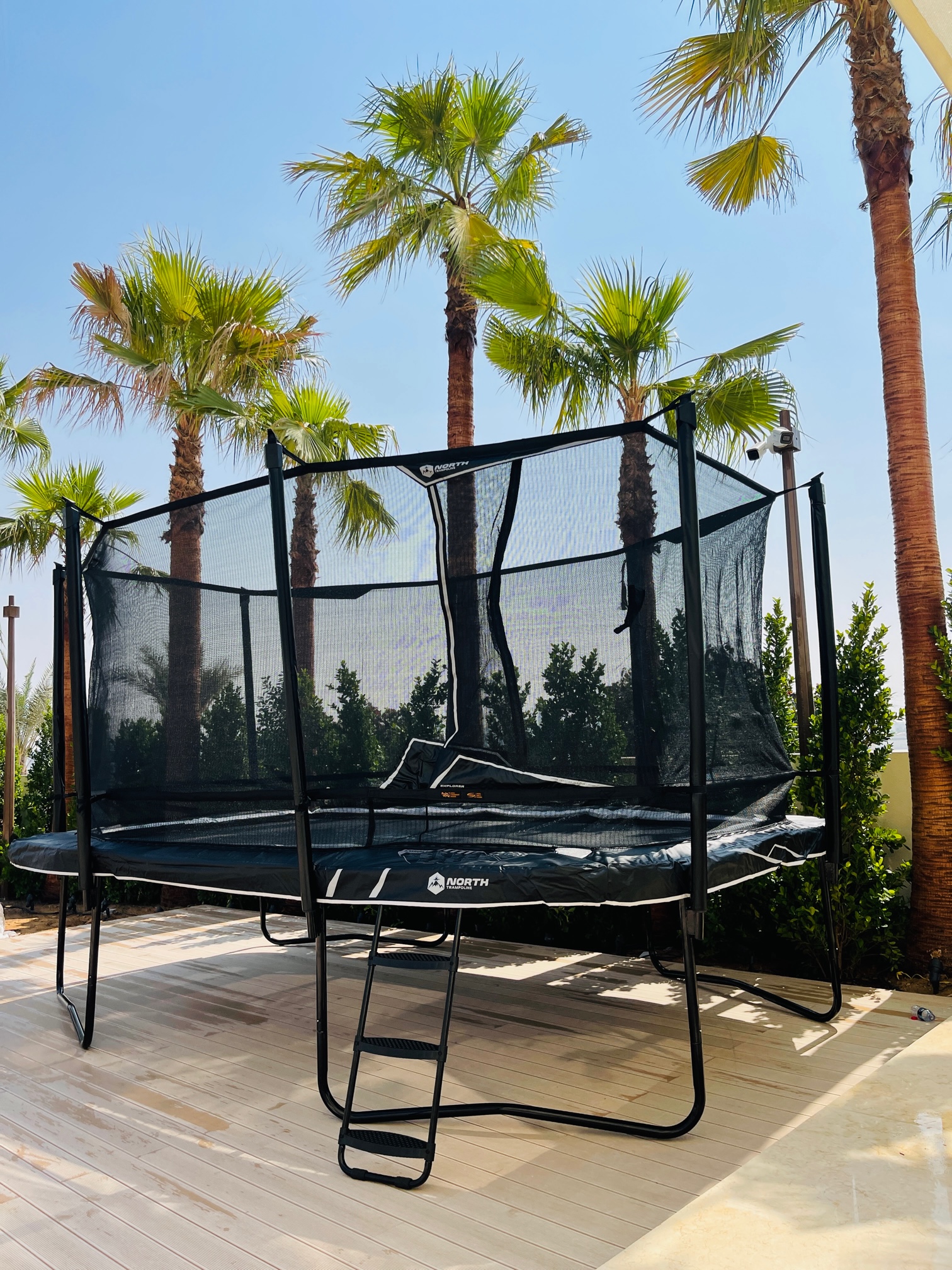
Just before stepping onto a trampoline, have you ever wondered about its weight limit?
Jumping on a trampoline is a wonderful, fun activity. However, there are some considerations you should take before buying and using one and its weight limit is one of them!
You don’t want your trampoline to break and you certainly don’t want your children to break! Before you step onto the trampoline to join your kids or allow more than one child to jump together you need to think about the trampoline weight limit. Here we explain why its an important consideration.
This article looks at:
- What happens if you go over the weight limit on a trampoline?
- Why is it important to know weight limits
- Why do we need a weight limit on a trampoline?
- Factors affecting the weight limit
What happens if you go over the weight limit?
If you go over the weight limit on a trampoline, you could damage the trampoline’s mat and springs/bungee cords, causing the whole equipment to break. This may cause injury to anyone using the trampoline at the time of breakage. Additionally, an overloaded trampoline may be more difficult to jump on, which could also lead to falls and injuries.
Even if the trampoline doesn’t break immediately, consistently overloading the equipment may cause extensive wear and tear on the springs/bungee cords and the mat, decreasing the trampoline’s overall lifespan. You might have to keep on replacing the broken parts, which can be quite expensive.
Why is it important to know weight limits
Trampolines have a weight limit because the frame and mat can only support so much weight before they become damaged or break.
North Trampolines that we stock at Jump Fitness Dubai, in the United Arab Emirates, have a recommended single-user weight of 110kg (242lbs), and they are safety tested up to 750kg (1,650lbs)
Although we always advise that there should only be one person jumping on the trampoline at any one time, we do understand that there may be times when several people get on the trampoline together.
In these situations, when there is more than one person on the trampoline, the combined weight of each person should not exceed the official recommendations. This is particularly important, in situations where more than one person bounces hard, at the same time. Therefore, not only does knowing the maximum weight limit become important from a safety aspect, but it also helps you to make informed decisions before you buy a trampoline.
Why do we need a weight limit on a trampoline?
You might be wondering why that if we’ve got some of the most sturdy, reliable trampolines in the industry, why are we so conscious of weight limits? Let us explain why.
Safety
Safety is the top reason for a weight limit on a trampoline. Exceeding the weight limit set by the manufacturer is a major safety concern. If the trampoline is overloaded, it could collapse, which could cause injuries.
Longevity
No one wants their trampoline to break after just a few years. If you follow the manufacturer’s guidelines and treat your trampoline well, then it will last you longer.
Meet industry standards
When a manufacturer tests for and sets a weight limit they are abiding by industry standards. CE and ASTM European industry standards require the manufacturer to inform buyers of the trampoline weight limit, i.e. how much weight a trampoline can hold. This is why trampoline weight limits are advised in the user manual.
In order for the trampoline warranty to remain valid, it is important for the user not to exceed the recommended user limit set by the manufacturer.
Factors affecting the weight limit
There are a number of factors that are taken into consideration when determining the weight capacity trampolines can tolerate.
The factors used to determine the average trampoline weight limit include the size and type, the materials used in its construction, and the intended use.
Size and shape
The size and shape are the main factors that will determine the weight of the jumpers. A smaller trampoline will typically have a lower weight limit than a larger one. In most cases, the bigger the trampoline, the higher the weight capacity it will have. Often, the rectangular shape is able to carry more weight, principally because springs are closer to the central bounce area. Because the springs are nearer, the stiffness doesn’t need to be as strong either.
Material
The materials used to make the trampoline can also affect the weight it can withstand. For instance, a trampoline meant for a heavier person will have more robust springs and a thicker steel frame. Even the jumping pad will have fewer stitching rows. As a rule of thumb, the better the quality of a materials the trampoline is made with the more weight it will be able to take.
Intended Use
The intended use of the trampoline can also play a role in determining its weight limit. For example, trampolines designed for recreational use typically have a lower weight limit than those designed for competitive use.
Weight limits on North Trampolines available at Jump Fitness Dubai, United Arab Emirates
3.6m / 12ft North Explorer Round – 110kg
4.2m / 14fNorth Explorer Round -110kg
3.5mx x2.45m (12ft x 8ft) North Explorer Oval -110kg
4.2m x 2.9m (14ft x 10ft)North Explorer Oval -110kg
5m x 3.34m (16ft x 11ft) North Explorer Oval-110kg
4.7m x 3.15m (15ft x 10ft)North Explorer Rectangle 110kg
4.7m x 3.15 (15ft x 10ft) North Performer Revolution -110kg
Got any questions? Ask us!
We hope that this article answered all your questions about trampoline weight limits! However, if have any questions, we will be more than happy to help you.
You can find out more by heading to our website to read more about our trampolines
Website: www.trampoline.ae
Whatsapp us at +971(0)585918776
Email us at: [email protected]
We hope you have fun an enjoy your trampoline!

